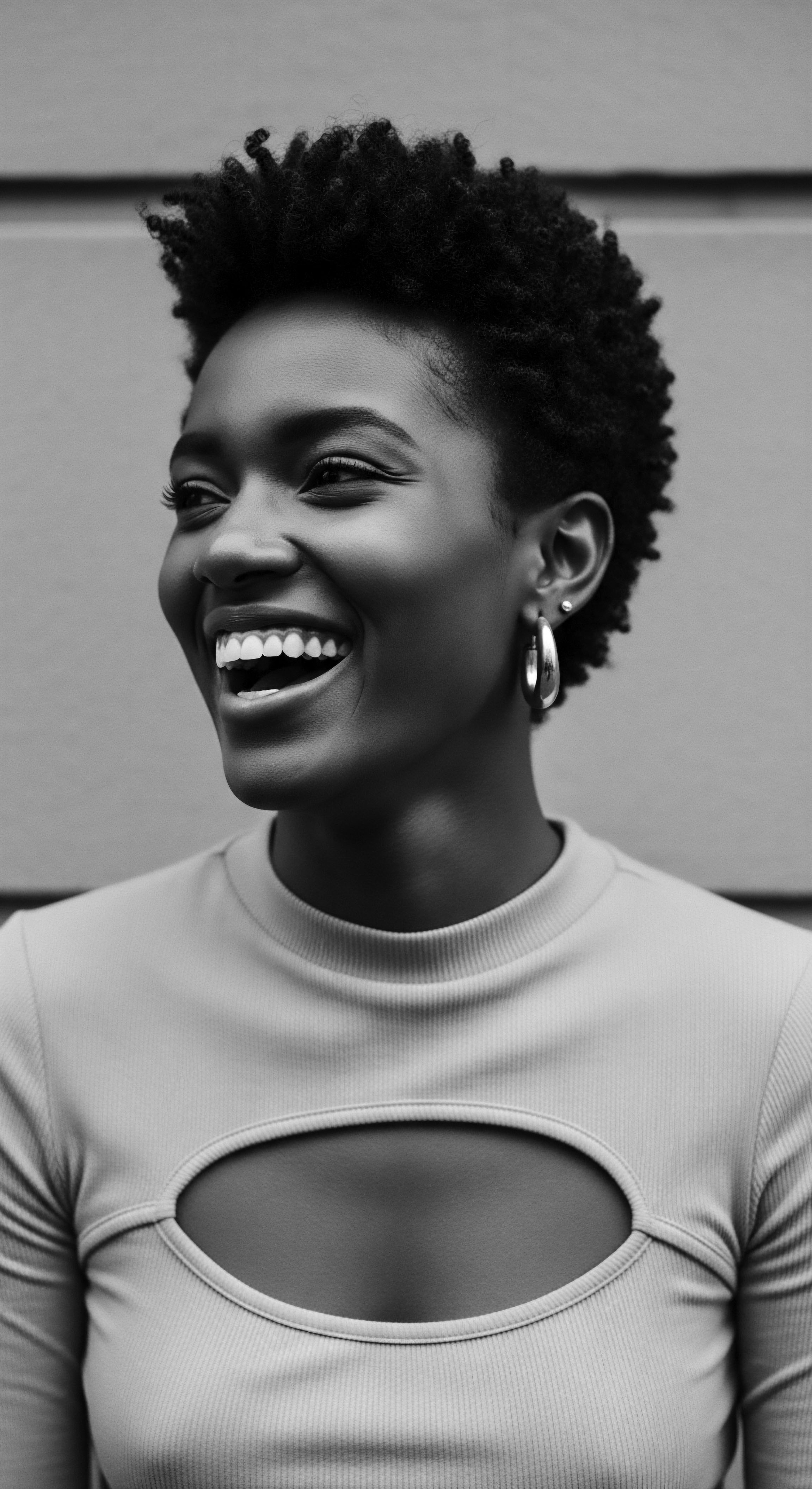
Fundamentals
The concept of “Golden Age Beauty,” when viewed through the lens of textured hair heritage, refers to a period or an ideal state where the intrinsic qualities of hair, particularly those with coils, curls, and kinks, were deeply revered, understood, and meticulously cared for. This understanding transcends mere aesthetics; it speaks to a comprehensive philosophy of well-being that recognized hair as a vital aspect of identity, spirituality, and community. In essence, it is the celebration of natural hair in its most vibrant, healthy, and culturally significant form, reflecting an unbroken lineage of traditional practices and wisdom.
This definition of Golden Age Beauty emphasizes the inherent beauty and strength of textured hair, recognizing it as a unique biological marvel and a profound cultural marker. It acknowledges periods when hair care was an intimate ritual, interwoven with daily life and communal bonds, rather than solely a pursuit of superficial appearance. This approach to beauty is grounded in a respectful relationship with the body, where hair is not something to be tamed or altered to fit external standards, but rather honored and nourished to express its fullest, most authentic self. It is a remembrance of a time when the care of one’s tresses was a connection to the past, a statement of the present, and a hope for the future.

The Foundational Principles of Hair Wellness
A fundamental aspect of Golden Age Beauty for textured hair lies in elemental biological understanding and ancestral care. It speaks to the recognition of what the hair naturally needs ❉ moisture, gentle handling, and nutrient-rich sustenance. From the earliest communal gatherings, before the advent of modern chemical interventions, textured hair was nurtured with profound insight.
Ancient communities understood the delicate nature of textured strands, with their unique structure requiring specific methods to retain moisture and prevent breakage. This knowledge was passed down through generations, often orally, and formed the bedrock of hair wellness.
- Moisture Retention ❉ Ancestral practices highlighted the importance of natural oils and butters to seal in hydration, vital for textured hair that tends to be drier than straighter types.
- Scalp Health ❉ Acknowledging the scalp as the foundation for healthy hair growth, ancient rituals involved massages and herbal applications to stimulate circulation and maintain a balanced environment.
- Protective Styles ❉ The development of intricate braiding, twisting, and wrapping techniques served not only as expressions of identity but also as practical means of safeguarding hair from environmental damage and reducing manipulation.
- Natural Ingredients ❉ Communities relied on what the earth provided, employing local herbs, plant extracts, and animal fats, which were known for their nourishing and healing properties.

Early Manifestations Across African Civilizations
The roots of Golden Age Beauty trace back thousands of years across various African civilizations, where hair was inextricably linked to spiritual energy and societal standing. In ancient Egypt, for instance, elaborate wigs crafted from human hair, wool, or plant fibers, often adorned with gold and beads, symbolized wealth and a connection to the divine. This artistry extended beyond the elite, with everyday braiding techniques indicating age, marital status, or tribal affiliation.
The Maasai people in East Africa held specific beliefs about hair as a conduit for spiritual energy, with shaving and re-growing rituals marking rites of passage. These practices illuminate a holistic approach to hair, where its appearance was a direct reflection of one’s inner world and communal belonging.
Golden Age Beauty, for textured hair, represents an era where intrinsic hair qualities were deeply revered, understood, and meticulously cared for as a comprehensive philosophy of well-being.
The historical record reveals a profound respect for hair as a living, sacred part of the body. Across different societies, hair was regarded as the highest point of the body, closest to the heavens, making it a powerful channel for spiritual communication. Adornments, styles, and even the act of grooming itself were imbued with spiritual significance, connecting individuals to their ancestors and the spiritual realm. This reverence informed every aspect of hair care, from the choice of natural ingredients to the skilled hands that crafted elaborate styles.
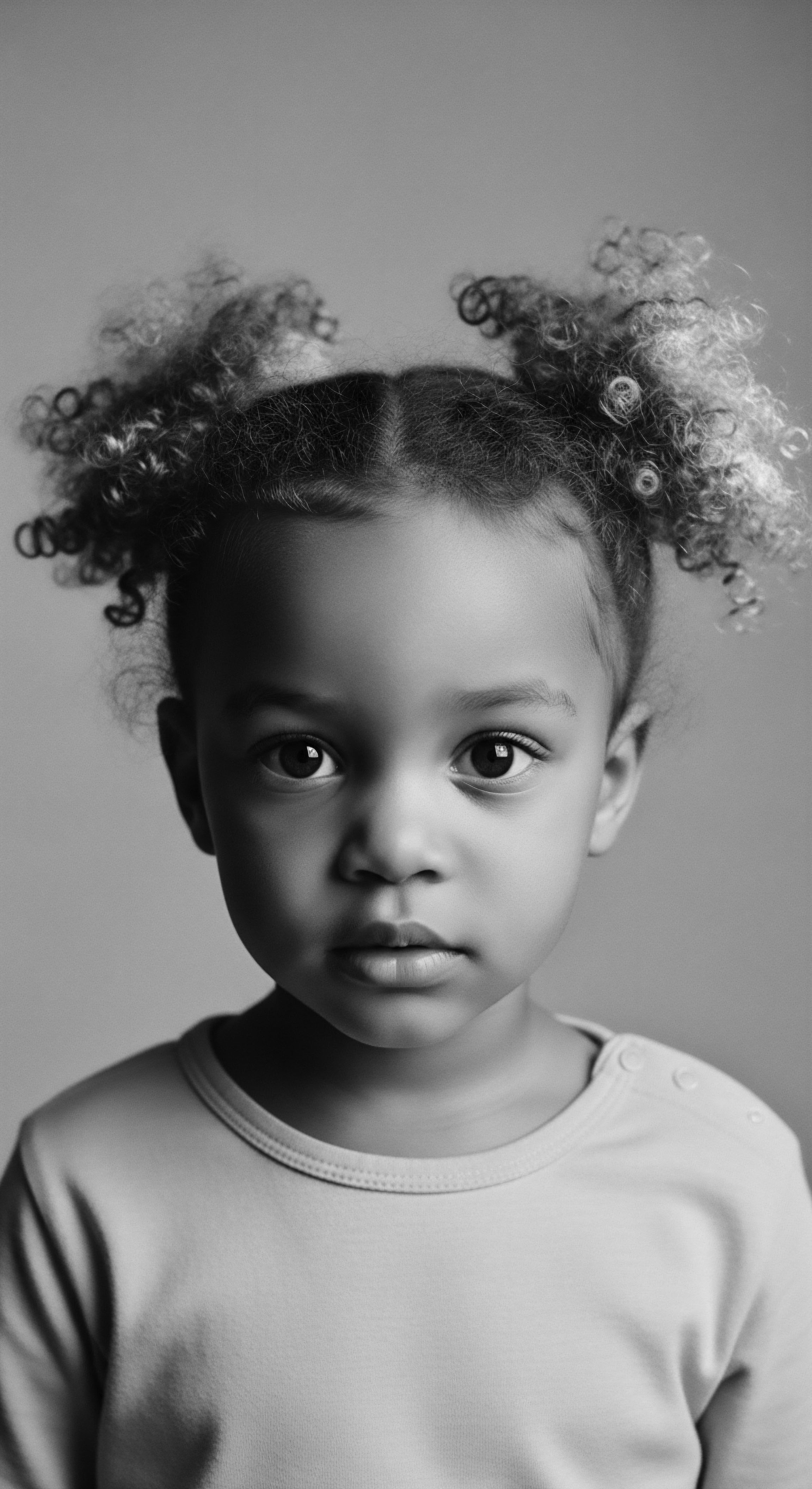
Intermediate
The intermediate understanding of Golden Age Beauty expands upon its foundational principles, deepening our appreciation for its cultural resonance and historical evolution within textured hair traditions. This interpretive view recognizes that the concept transcends a singular historical period; it refers to any era or cultural context where textured hair was not merely accepted, but actively celebrated, understood, and maintained with practices that honored its inherent characteristics and cultural significance. The meaning of Golden Age Beauty thus becomes synonymous with periods of self-affirmation, community resilience, and sustained wisdom regarding hair.
Exploring this idea requires a nuanced examination of how beauty standards, particularly those pertaining to hair, were shaped by the lived experiences of Black and mixed-race communities. It highlights a continuous interplay between ancestral knowledge, environmental adaptations, and the profound role of hair in articulating identity. This interpretation of Golden Age Beauty allows us to understand hair care as a dynamic, living tradition, capable of adapting to new circumstances while retaining its core principles of reverence and deep understanding.

The Living Traditions of Care and Community
The tender thread of Golden Age Beauty stretches through generations, woven into the very fabric of Black and mixed-race hair experiences. Communal grooming, often a centerpiece of social activity, strengthened familial bonds and served as a powerful means of transmitting oral histories and practical skills. In pre-colonial African societies, the meticulous process of hair styling, which could span hours or even days, involved washing, combing, oiling, braiding, and adorning hair with shells, beads, or cloth. This ritual was not just about appearance; it was a social opportunity to connect with family and friends, a practice that continues to hold significance for many today.
The heritage of these practices showcases a profound understanding of hair as more than just a physical attribute. It was, and remains, a canvas for self-expression, a marker of social standing, and a testament to collective identity. The intricate patterns of braids might communicate a woman’s marital status, age, or social standing. Adetutu Omotos, in a paper published in the Journal of Pan African Studies, posited that hair was extremely important in ancient African civilizations, representing family history, social class, spirituality, tribe, and marital status.
Golden Age Beauty illuminates eras where textured hair was celebrated, reflecting self-affirmation, community resilience, and sustained wisdom in hair care.
The ingenuity of ancestral hair care is evident in the natural ingredients utilized. African black soap, for instance, sourced from West Africa, is rich in vitamins A and E, offering deep cleansing without stripping natural oils, while also promoting hair growth and softening strands. Chebe powder, traditionally used in Chad, is celebrated for its ability to increase hair thickness and moisture retention, aiding in length preservation. These historical practices demonstrate a deep, empirical understanding of what nurtures textured hair.
| Traditional Ingredient Shea Butter |
| Ancestral Use for Textured Hair Used extensively across West Africa for its moisturizing and protective properties; applied to scalp and strands to seal in moisture and soften hair. |
| Modern Hair Science Understanding Recognized for high concentrations of fatty acids and vitamins (A, E, F), providing deep conditioning, reducing breakage, and aiding in scalp health. |
| Traditional Ingredient African Black Soap |
| Ancestral Use for Textured Hair A gentle cleanser from West Africa, made from palm tree leaves, cocoa pods, and plantain skins, used for cleansing hair and scalp. |
| Modern Hair Science Understanding Valued for its natural cleansing properties, being antifungal and antibacterial, and for providing vitamins A and E that nourish the scalp without stripping natural oils. |
| Traditional Ingredient Chebe Powder |
| Ancestral Use for Textured Hair Originating from Chad, applied to hair to retain moisture, increase thickness, and promote length retention. |
| Modern Hair Science Understanding Understood to strengthen hair strands, reduce breakage, and support moisture retention through its unique botanical composition, leading to improved hair health and length. |
| Traditional Ingredient Castor Oil |
| Ancestral Use for Textured Hair Utilized in ancient Egypt for conditioning, strengthening hair, promoting growth, and adding shine. |
| Modern Hair Science Understanding Known for its ricinoleic acid content, which promotes blood flow to the scalp, nourishes follicles, and possesses antimicrobial properties that can improve scalp conditions. |
| Traditional Ingredient These traditional ingredients underscore a lineage of knowledge, demonstrating how ancestral wisdom aligns with contemporary scientific understanding of textured hair care. |
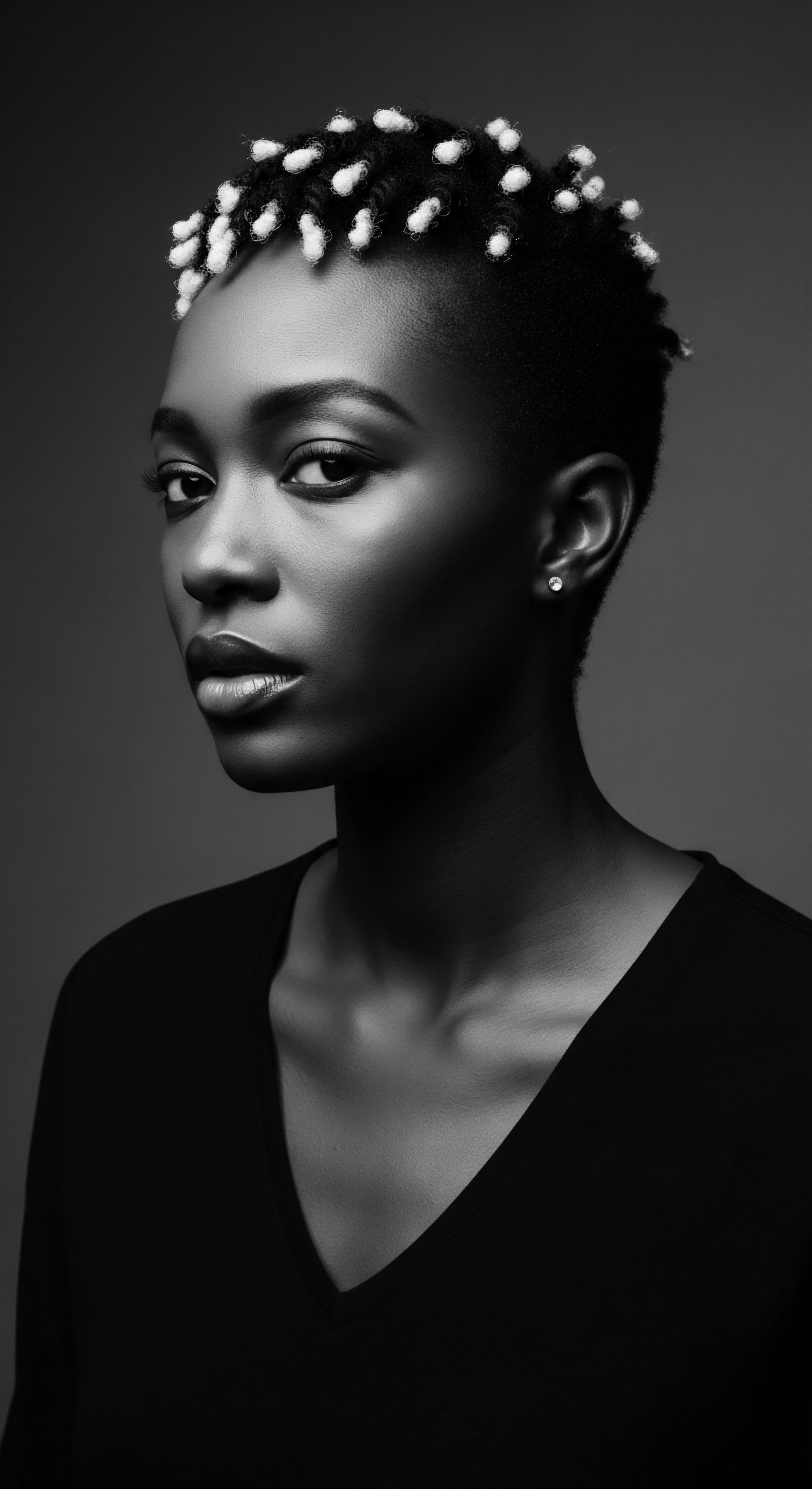
Hair as Identity and Resistance
The transatlantic slave trade, beginning in the 15th century, forcibly brought millions of Africans to the Americas, a period marked by the systematic erasure of cultural practices, including traditional hairstyles. Enslaved individuals often had their hair shaved, an act designed to dehumanize and strip away their African identity. Yet, against this backdrop of profound oppression, hair became a symbol of survival and resistance.
Enslaved women, particularly rice farmers, braided rice seeds into their hair as a means of survival and cultural preservation, carrying the heritage of their homeland with them. This speaks to the remarkable ingenuity and resilience of Black people in maintaining their traditions.
Even after emancipation, the echoes of historical bondage lingered, often leading to a collective rejection of natural hair due to societal pressures and Eurocentric beauty standards. The preference for straightened hair, often achieved through damaging chemical processes, became a means of attempting to assimilate and gain acceptance in a discriminatory society. However, the innate strength of Black hair and its cultural meaning could not be suppressed indefinitely.
The mid-20th century saw a powerful resurgence with the “Black is Beautiful” movement and the rise of the Afro hairstyle. This was a profound assertion of Black identity and a direct challenge to Eurocentric beauty norms. Icons like Angela Davis and the Black Panther Party popularized the Afro as an emblem of resistance, empowerment, and solidarity with African roots. This era signified a reclamation of natural textures and styles, underscoring the deep connection between hair and political identity.
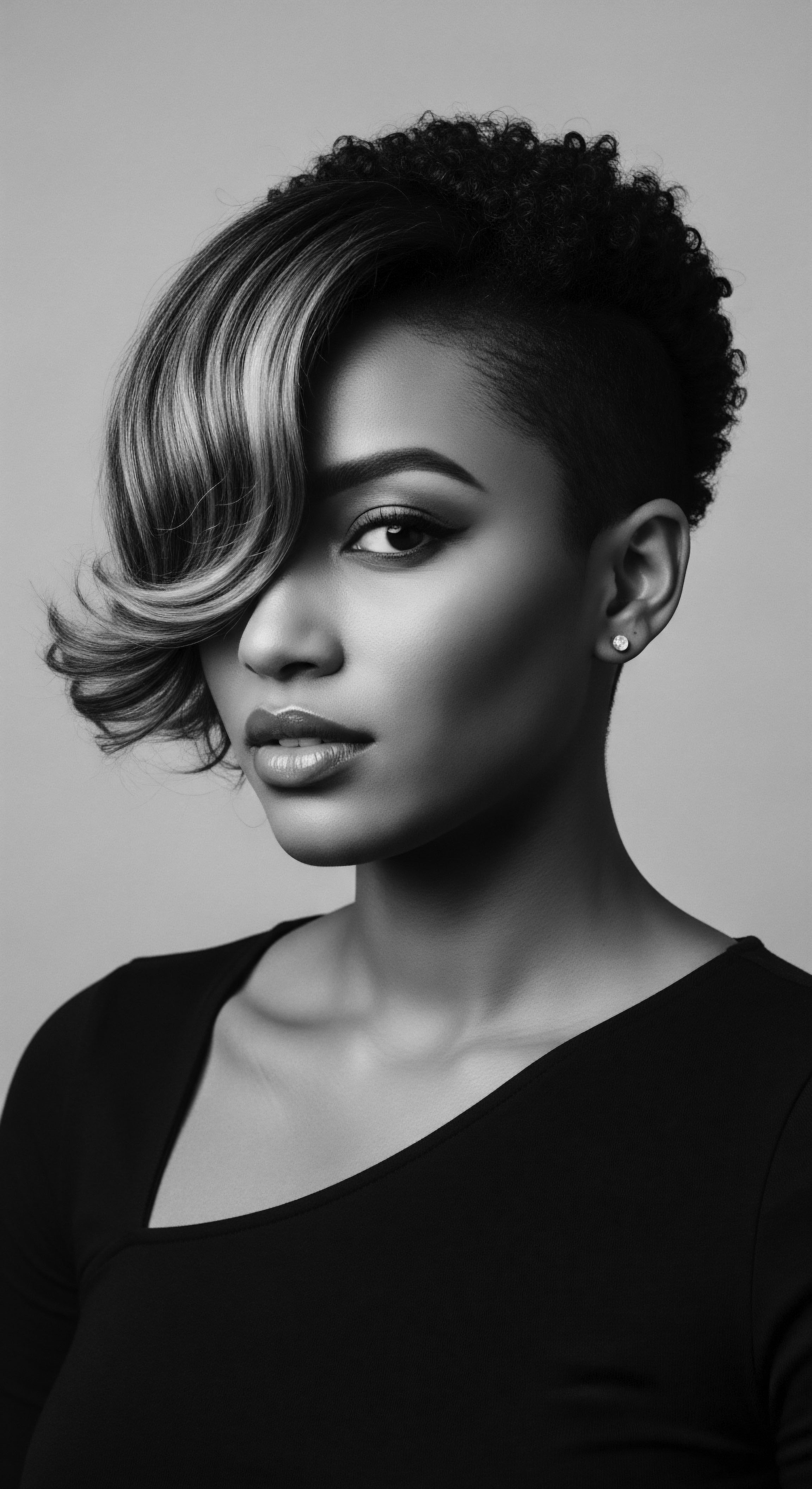
Academic
The academic understanding of Golden Age Beauty transcends simple historical categorization; it is a conceptual framework that delineates periods wherein the inherent structure and cultural symbolism of textured hair attained an apex of valorization and specialized care, often in defiance of prevailing oppressive aesthetics. This delineation is not confined to a singular chronological epoch but rather refers to culturally specific moments when ancestral knowledge of hair biology and its spiritual dimensions were deeply intertwined with social systems and individual expression. It is a period marked by the convergence of biological understanding, cultural meaning, and practical application, fostering optimal hair health and a profound sense of self-acceptance. The meaning of Golden Age Beauty in this context is a rigorously defined state of hair flourishing, underpinned by a sophisticated integration of traditional wisdom and observable hair characteristics.
This conceptualization necessitates a critical examination of historical narratives that have often marginalized or pathologized textured hair, re-centering the discourse on indigenous systems of knowledge and the lived experiences of Black and mixed-race communities. It requires moving beyond anecdotal accounts to a more structured analysis of material culture, ethnographic data, and the sociopolitical forces that have shaped hair practices. The exploration delves into the intricate mechanisms through which hair became a communicative symbol, a repository of collective memory, and a site of enduring cultural agency. We must therefore scrutinize the historical conditions that either facilitated or impeded the realization of this “golden age” for textured hair.

Echoes from the Source ❉ Elemental Biology and Ancient Practices
The deep roots of Golden Age Beauty lie within the elemental biology of textured hair and the ancient practices devised to honor its unique architecture. Textured hair, characterized by its coiled, curled, or kinky structure, possesses distinct biological properties that differentiate it from other hair types. Its elliptical cross-section, coupled with varied twist patterns along the strand, contributes to its remarkable volume and strength, yet also renders it more susceptible to dryness and mechanical damage if not cared for appropriately. This intrinsic fragility, paradoxically, catalyzed the development of highly sophisticated care regimens and communal rituals in ancestral African societies.
Ancient civilizations held a profound understanding of these biological nuances. For instance, archaeological evidence from ancient Egypt reveals meticulous hair care, where individuals used castor oil for conditioning and strengthening. This speaks to an early empirical recognition of emollient properties that are today validated by modern lipid science. Similarly, West African communities developed a rich tradition of utilizing local botanicals and natural butters.
The application of shea butter, rich in fatty acids, provided a protective barrier and deep conditioning, a practice centuries ahead of commercial formulations. This ancestral wisdom was not merely cosmetic; it was a deeply integrated component of health and societal function.
- Structural Understanding ❉ The recognition that the helical structure of textured hair benefits from specific moisturizing agents and gentle detangling methods to prevent breakage.
- Environmental Adaptation ❉ Practices evolved to protect hair from harsh climatic conditions, reflecting a deep ecological literacy in material selection and styling.
- Physiological Nurturing ❉ Scalp care, using ingredients such as African black soap, was understood as fundamental to fostering a healthy environment for hair growth, reflecting an early holistic approach to dermatological wellness.
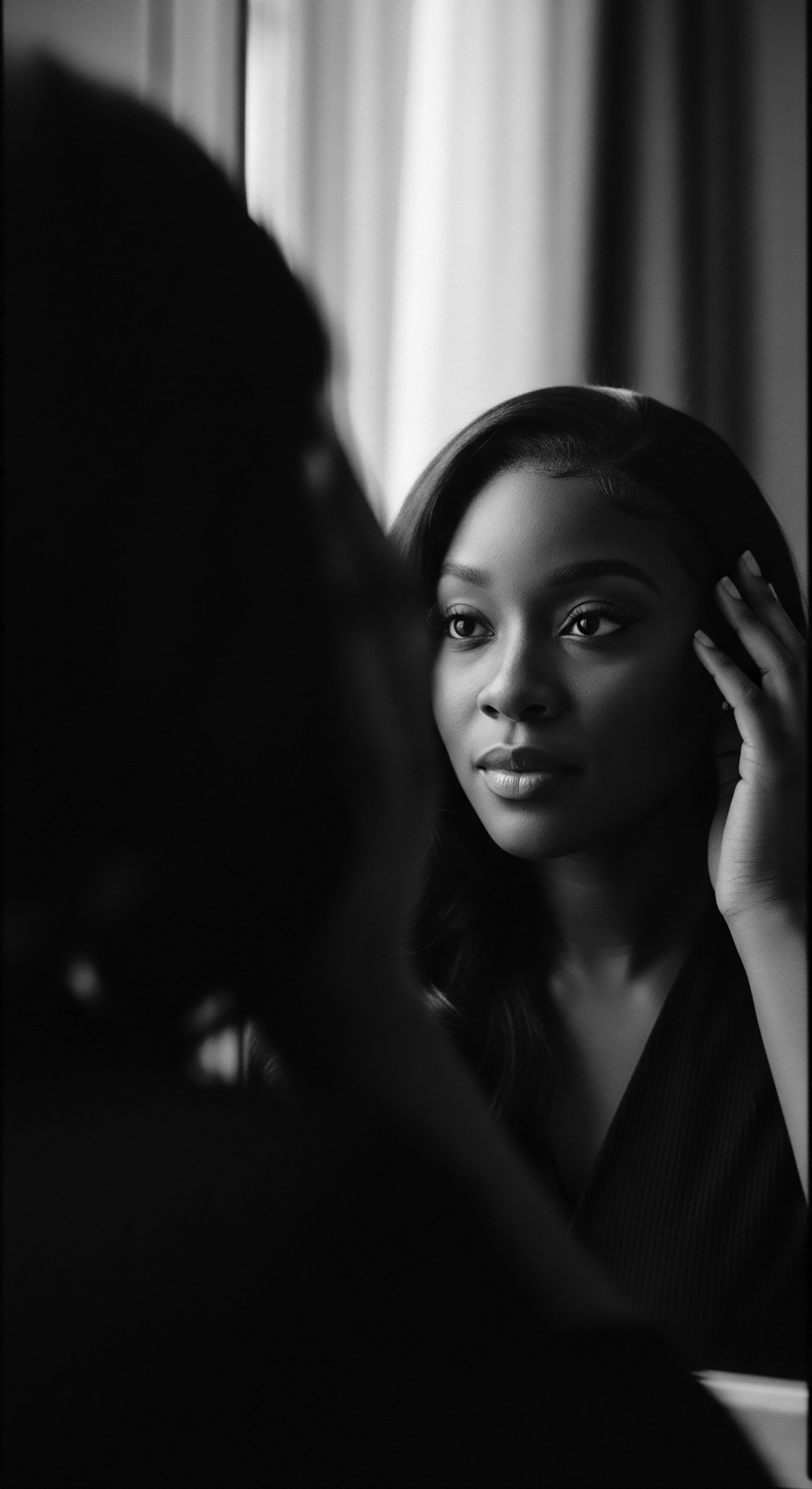
The Unbound Helix ❉ Voicing Identity and Shaping Futures
The concept of Golden Age Beauty for textured hair extends beyond past epochs, reverberating powerfully in contemporary expressions of identity and the ongoing shaping of futures. The helix of textured hair, far from being merely a biological structure, has long served as a potent canvas for social and political messaging, particularly within Black and mixed-race diasporic communities. Its malleability and resilience have mirrored the fortitude of those who wear it, allowing for a continuous reinvention of meaning while honoring ancestral legacies.
Consider the profound shift in the perception and treatment of Black hair in the United States post-slavery. Enslaved Africans were systematically stripped of their hair traditions through forced shaving, an act of dehumanization designed to sever cultural ties. Following emancipation, many Black individuals felt compelled to straighten their hair to conform to Eurocentric beauty ideals, perceiving their natural textures as “bad” or “unmanageable.”, This era saw widespread use of harsh chemical relaxers, a process that not only altered hair structure but often caused significant scalp damage and health concerns.
(Matjila, 2020, p. 32)
Yet, within the crucible of this oppression, acts of defiance and preservation continued. An illustrative case study comes from the Antebellum South, where enslaved African women, particularly those working in rice fields, meticulously braided rice grains and seeds into their cornrows before escaping plantations. This intricate braiding technique, often done by moonlight, served as a means of survival, providing sustenance for the perilous journey to freedom and allowing for the planting of crops in new territories. This specific historical example, often overlooked, powerfully illuminates the Golden Age Beauty’s connection to textured hair heritage as a practical tool for liberation and a discreet archive of agricultural knowledge.
These braided “maps” were not just functional; they represented a profound intellectual and cultural heritage, a testament to the resilience and ingenuity of enslaved women who transformed their hair into a clandestine library of resistance. The cornrow itself, a style tracing back 3000 B.C. in West Africa, thus became a coded language, signifying routes to escape and a determination to preserve their ancestral customs.
This tradition of coded communication through hair demonstrates a deep cultural and strategic intelligence. The braids were not random designs; they were intricate patterns that conveyed specific information, legible only to those who understood the language of hair. This transformation of hair from a personal adornment to a vital instrument of survival speaks volumes about the interwoven nature of beauty, identity, and resistance. It underscores the meaning of Golden Age Beauty as residing not just in aesthetic perfection, but in its capacity to embody collective memory, facilitate survival, and articulate defiance.
The unbound helix of textured hair serves as a profound canvas, continuously voicing identity and shaping futures by reflecting the resilience and ingenuity of Black and mixed-race communities.
The evolution of hair activism continues to redefine beauty standards, pushing for a broader, more inclusive understanding of aesthetic value. The Crown Act legislation in the United States, which prohibits discrimination based on hair texture and protective hairstyles, stands as a modern echo of these historical struggles for hair autonomy. This legal recognition highlights the enduring meaning of hair as a personal and cultural right, rather than merely a cosmetic choice. The ongoing natural hair movement, a resurgence of pride in Afro-textured hair that gained significant momentum in the 2000s, builds upon these historical foundations, challenging Eurocentric norms and celebrating the diverse spectrum of Black hair.
This re-centering of natural hair, often through the adoption of styles like locs, braids, and afros, is a powerful act of self-definition. It speaks to a conscious choice to honor ancestry and affirm a distinct cultural identity in a world that often seeks to homogenize. This ongoing embrace of textured hair, nurtured with informed care and celebrated for its unique qualities, embodies the enduring spirit of Golden Age Beauty, ensuring its legacy continues to shape the future of beauty and identity for generations to come.
The dialogue surrounding hair and identity in Black communities often involves complex considerations of cultural authenticity versus individual expression. An ethnographic study examining perceptions of Black hair and the Natural Hair Movement in South Carolina, for instance, highlights how Black women navigate historical views of hair while expressing their identity. This research underscores that hair choices are often intertwined with deeper narratives of self-acceptance and a connection to cultural inheritance, beyond simple aesthetic preferences.
The economic facets of hair maintenance also present a compelling dimension. While some commercially available products marketed to Black women contain chemicals linked to various health concerns, the Black hair industry is a significant economic force, conservatively valued at around $2.5 billion. However, a mere 3% of this ownership is attributed to Black entrepreneurs, indicating a persistent disparity in economic control over products designed for Black hair. This further emphasizes the ongoing struggle for autonomy and the reclamation of cultural resources within the beauty landscape.

Reflection on the Heritage of Golden Age Beauty
The Golden Age Beauty, in its truest rendering, is not a static point in history but a recurring phenomenon, a profound meditation on the enduring spirit of textured hair, its deep heritage, and its sacred care. It is a concept that breathes with the vitality of ancestral wisdom, resonating through generations of Black and mixed-race communities who have always understood hair as a living, expressive archive. We find its echoes in the hushed conversations during communal braiding rituals, in the deliberate selection of earth’s generous offerings for nourishment, and in the bold statements of identity etched into every strand.
This enduring beauty is a testament to the resilience of a people, who, despite historical attempts to diminish their inherent worth, have continually reclaimed and celebrated the splendor of their coils, curls, and kinks. It reminds us that beauty, at its profoundest, is not merely seen, but felt, understood, and inherited.

References
- Caldwell, E. (2003). Look at her hair ❉ The body politics of black womanhood in Brazil.
- Matjila, C. R. (2020). The meaning of hair for Southern African Black women. University of the Free State.
- Omotos, A. (2018). The cultural significance of hair in ancient African civilizations. Journal of Pan African Studies.
- Sherrow, V. (2003). Encyclopedia of Hair ❉ A Cultural History. Greenwood Publishing Group.
- Tharps, L. & Byrd, A. (2001). Hair Story ❉ Untangling the Roots of Black Hair in America. St. Martin’s Press.
